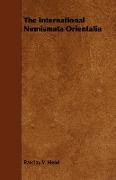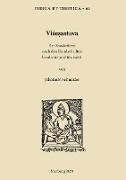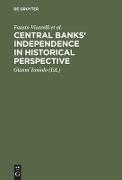The International Numismata Orientalia
BücherAngebote / Angebote:
AUTHORS PREFACE. IN a work like the NUMISALITA ORIENTALIA, which is designed to embrace the whole field of Oriental Numismatics, the coinage of the great Persian Empire holds of necessity an avowedly leading position. The famous Persian Darics, lthe archers, so frequently alluded to in the history of Grecce and of mhich tho influence was often so detrimental to the morality of the Hellenes, form the connecting link bctween the coinage of the Empire of Craesus on the one hand and that of Alexander the Great on the other. We are thus led to commence with the consideration of the coinage of the kingdom of Lydia, a thorough cornproheusion of mhich is primarily desirable for those who mould attain to a fuller knowledge of Persian numismatics than is to be gained by a mere contemplation of thc types of the coins. The Persian daric is the legitimate successor of the gold statcr of Crcesus, to whose administrative genius must bo ascribed the earliest idea of a double currency based upon the relative values of gold and silver. We are therefore called upon to examine, first of all, the origin of the system of weights in use throughout thc East in remote times, and to trace back to their source on the banks of the Euphrates and the Tigris the germs of the meights adopted in Lydia by the ancestors of Crccsus, according to which the precious metals mere then estimated, and passed from hand to hand as recognised measures of the exchangeable value of all other commodities. These primitive weight-systems mere the basis of the futuro coinage, not only of Asia, but of European Grecce and Lydia is the border-land, the intermediate territory and link between the East and the Test. For this reason I have prefixed to my description of the lydian coinage an introductory survey of the eight systems in use throughout the East before the invention of the art of coining. These preliminary remarks are, with some small modifications, extracted from an article which I published in the Numismatic Chronicle N.s. vol. xv. p. 247 sqq. On the ancient electrum coins struck betveeu the Lelantian Wars and the accession of Darius. The origin and the nomenclaturc of the Greek systems of meight is a subject which, until quite lately, has been so much misunderstood both by metrologists and numismatists, that a recapitulation in the present work of some of the chief results of thc invaluable labours of Nommsen and of Brandis in this direction will form an appropriate introduction. But to pass from AIetrology to Numismatics. The earliest rude attempts at coining are undoubtedly the issucs of the Sardian mint but mhen at a somewhat later period, probably during the reign of Sadyattes, the artistic influence of the Grceks of thc coast towns began to make itself felt in the Lydian capital, and when thc coins of Lydia are first adorned mith the figures of animals, it be- comes difficult, if not impossible, to dram thc line betmccn the coinage of Lydia and that of the Asiatic Greek cities, and morc especially Nilctus. In still later times, during the reign of Crmsus, the coinage of Lydia again stands out clearly marked and easily distinguishable, with its national type, the fore-parts of a Lion and a Bull face to face...
Folgt in ca. 10 Arbeitstagen




